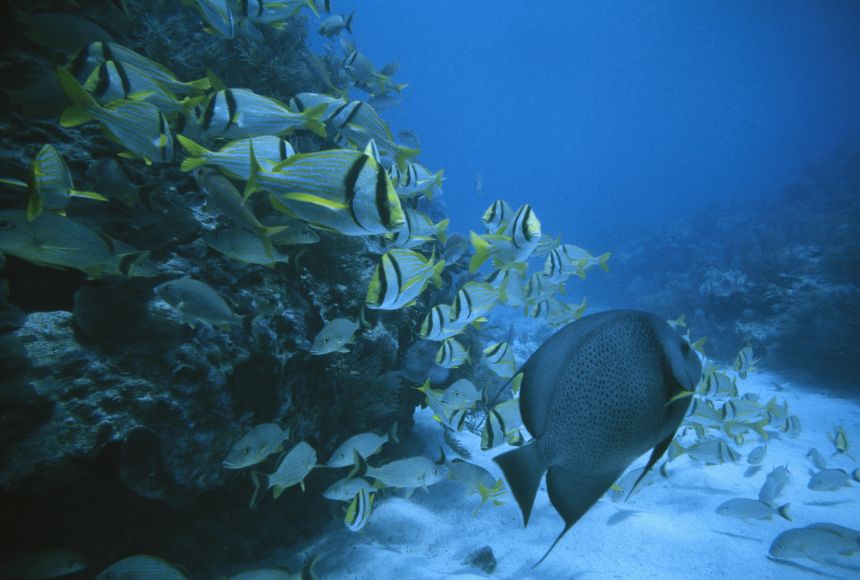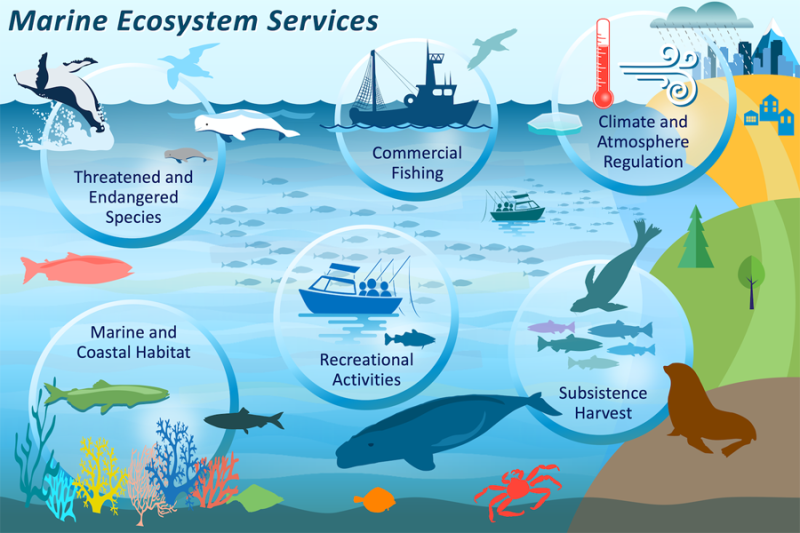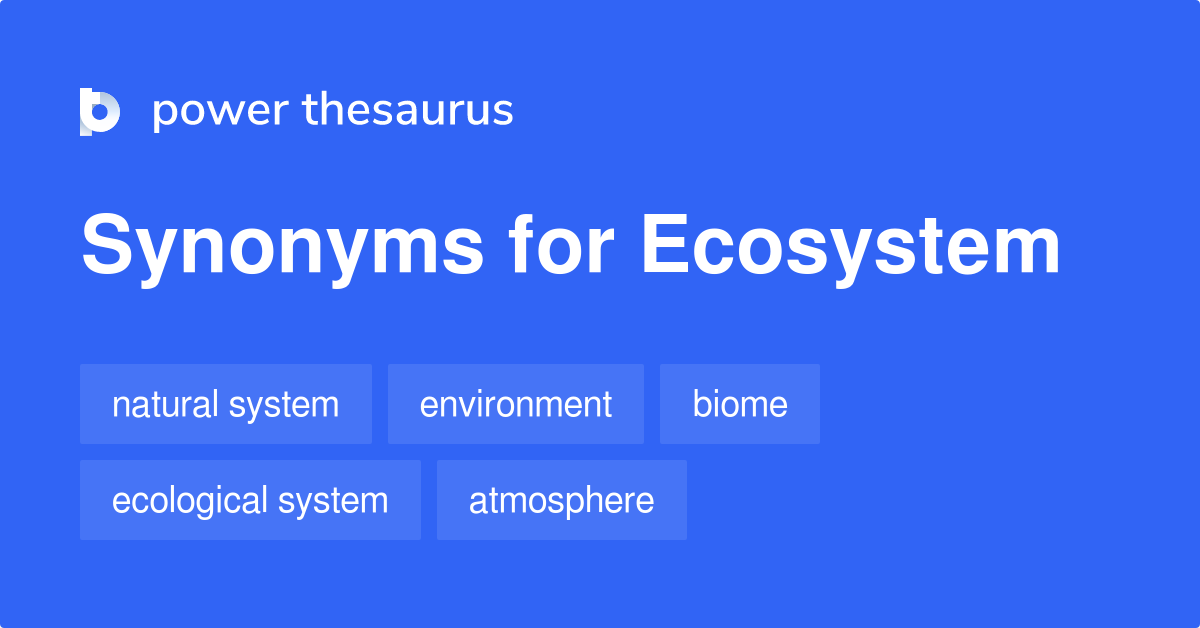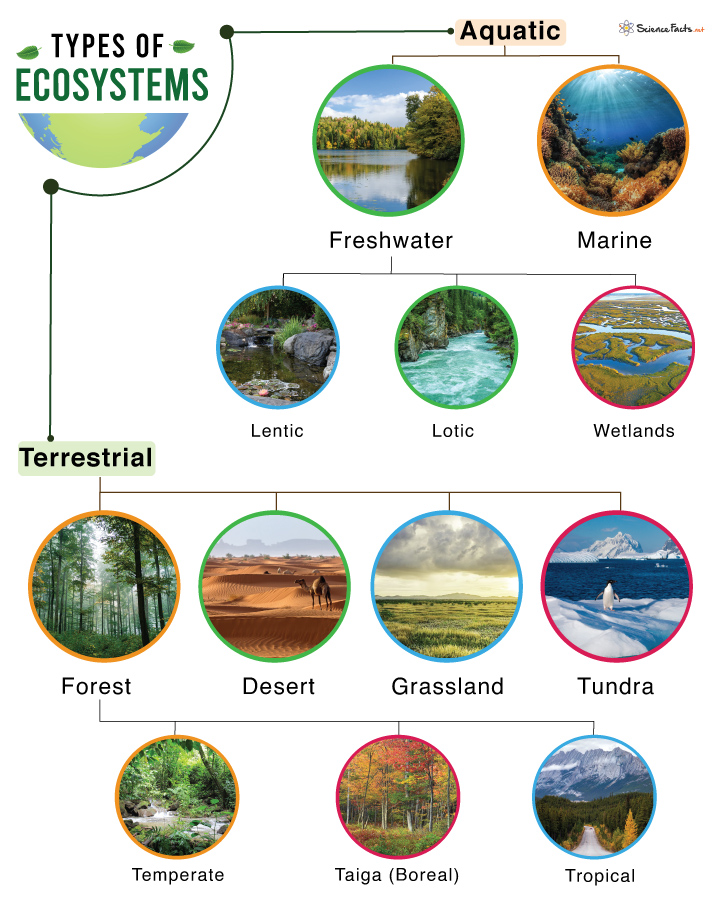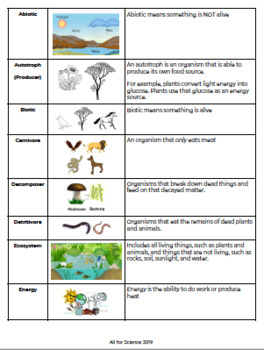Topic what factors define aquatic ecosystems: Explore the fascinating dynamics shaping aquatic ecosystems, from the depths of the oceans to the flow of freshwater rivers, uncovering the crucial factors that sustain life beneath the surface.
Table of Content
- What factors contribute to the definition of aquatic ecosystems?
- Overview of Aquatic Ecosystems
- Types of Aquatic Ecosystems
- Abiotic Factors in Aquatic Ecosystems
- Biotic Factors in Aquatic Ecosystems
- Importance of Sunlight in Aquatic Ecosystems
- YOUTUBE: Aquatic Ecosystem: Definition and Types
- Temperature and Its Impact on Aquatic Life
- Dissolved Oxygen Levels and Aquatic Organisms
- Water Flow and Its Effects on Ecosystems
- Salinity in Marine vs. Freshwater Ecosystems
- Human Impacts on Aquatic Ecosystems
- Conservation Efforts for Aquatic Ecosystems
What factors contribute to the definition of aquatic ecosystems?
Aquatic ecosystems are defined by a combination of various factors. These factors determine the characteristics and dynamics of the ecosystem. Some of the key factors that contribute to the definition of aquatic ecosystems include:
- Water flow rate: The rate at which water moves within the ecosystem affects the distribution of organisms and the availability of nutrients and oxygen.
- Currents: The direction and strength of currents play a role in shaping aquatic habitats and influencing the movement of organisms.
- Depth: The depth of an aquatic ecosystem determines the amount of sunlight that penetrates through the water column, which affects the types of plants and algae that can survive and the habitats available for organisms.
- Salinity: The concentration of salt in the water affects the composition and diversity of organisms that can thrive in the ecosystem. Freshwater and saltwater ecosystems have distinct characteristics.
- Amount of sunlight exposure: Sunlight is essential for photosynthesis, and it drives the productivity and energy flow within aquatic ecosystems. The availability of sunlight determines the growth of plants and algae, which forms the base of the food chain.
- Oxygen and nutrient levels: The availability of dissolved oxygen and essential nutrients such as nitrogen and phosphorus in the water influences the types and abundance of organisms that can survive in the ecosystem.
These factors intertwine and interact to shape the structure and functioning of aquatic ecosystems. Understanding and managing these factors are crucial for the conservation and sustainable use of aquatic resources.
READ MORE:
Overview of Aquatic Ecosystems
Aquatic ecosystems are dynamic environments characterized by the presence of water, either saltwater or freshwater, which supports a diverse range of life. These ecosystems are critical for biodiversity, providing habitat, breeding grounds, and food sources for countless species. Aquatic ecosystems vary widely in size, depth, temperature, salinity, and biodiversity, encompassing everything from vast oceans and seas to rivers, lakes, ponds, and wetlands.
- Oceans and Seas: Covering over 70% of the Earth"s surface, these saltwater environments are the largest aquatic ecosystems, home to a vast array of species.
- Freshwater Ecosystems: Including rivers, lakes, ponds, and wetlands, these ecosystems are vital sources of fresh water for drinking, agriculture, and habitat for many species.
- Estuaries and Wetlands: Critical transitional zones between land and water, these ecosystems are nurseries for many marine species and provide protection against storms and flooding.
- Importance of Aquatic Ecosystems: Beyond their biodiversity, aquatic ecosystems play key roles in the global climate, water cycle, and human economies through fisheries, tourism, and recreation.
Aquatic ecosystems are influenced by a variety of physical, chemical, and biological factors that determine their health, productivity, and the diversity of life they support. Understanding these ecosystems is crucial for conservation efforts and ensuring their resilience in the face of environmental changes.

Types of Aquatic Ecosystems
Aquatic ecosystems are broadly categorized into two main types based on their water salinity: freshwater ecosystems and marine ecosystems. Each type supports unique habitats, species, and ecological processes.
- Freshwater Ecosystems: These ecosystems have low salt concentrations and include rivers, lakes, streams, ponds, and wetlands. They are essential for the supply of fresh drinking water, agriculture, and habitat for a wide variety of plants and animals.
- Marine Ecosystems: Characterized by high salt concentrations, marine ecosystems cover oceans, seas, coral reefs, and estuaries. They are home to a diverse range of marine life and are crucial for global biodiversity, climate regulation, and the economy.
Within these broad categories, there are specific types of ecosystems:
- Lotic Ecosystems: Flowing water systems like rivers and streams, where the movement of water plays a crucial role in shaping the ecosystem.
- Lentic Ecosystems: Still water bodies such as lakes and ponds, with distinct ecological characteristics due to the lack of water flow.
- Wetlands: Areas where water covers the soil or is present at or near the surface for part of the year, acting as a buffer zone and providing habitats for many species.
- Coral Reefs: Known as the "rainforests of the sea," coral reefs provide complex and diverse habitats for a wide variety of marine organisms.
- Estuaries: Coastal areas where freshwater from rivers and streams mixes with saltwater from the ocean, creating highly productive environments.
Each type of aquatic ecosystem plays a critical role in maintaining ecological balance, supporting species diversity, and providing services that are vital to human well-being.
Abiotic Factors in Aquatic Ecosystems
Abiotic factors are the non-living components that play a key role in influencing the structure, distribution, and function of aquatic ecosystems. These factors create the physical and chemical environment in which aquatic organisms live.
- Water Temperature: A critical factor that affects metabolic rates of aquatic organisms and influences ecosystem diversity and geographic distribution.
- Light Penetration: Determines the depth at which photosynthesis can occur, affecting the distribution of plants and photosynthetic algae.
- Salinity: The concentration of salts in water influences the types of species that can inhabit marine and freshwater ecosystems.
- Dissolved Oxygen: Essential for the respiration of aquatic organisms, the level of dissolved oxygen is influenced by temperature, salinity, and water movement.
- pH Levels: The acidity or alkalinity of water can affect the health and diversity of aquatic life.
- Nutrient Availability: Nutrients such as nitrogen and phosphorus are crucial for the growth of aquatic plants and algae, which form the base of the food web.
- Water Flow: The speed and direction of water flow can influence sediment distribution, habitat structure, and the availability of nutrients.
- Substrate Type: The type of material that makes up the bottom of aquatic ecosystems, such as sand, rock, or mud, affects the types of habitats available for organisms.
Understanding these abiotic factors is essential for the management and conservation of aquatic ecosystems, as they directly impact the health and sustainability of these environments.

Biotic Factors in Aquatic Ecosystems
Biotic factors refer to the living components of an ecosystem that influence the structure and function of aquatic environments. These factors include the interactions among various organisms that inhabit water bodies, from microscopic algae to large marine mammals.
- Phytoplankton and Algae: Serve as the primary producers in aquatic ecosystems, converting sunlight into energy through photosynthesis and forming the base of the food web.
- Aquatic Plants: Including seagrasses and freshwater plants, these organisms contribute to the oxygen supply, provide habitat, and stabilize the substrate.
- Zooplankton: Microscopic animals that feed on phytoplankton and are, in turn, a vital food source for larger aquatic animals.
- Invertebrates: Such as mollusks, crustaceans, and coral, play various roles in the aquatic food web, from grazers and predators to providing structure for ecosystems like coral reefs.
- Fish: Represent a diverse group of vertebrates ranging from small minnows to large sharks, playing key roles as predators, prey, and competitors within aquatic ecosystems.
- Amphibians and Reptiles: Including frogs, turtles, and crocodiles, these vertebrates are important for nutrient cycling and as indicators of ecosystem health.
- Birds and Mammals: Species like waterfowl, otters, and whales rely on aquatic ecosystems for food, breeding, and habitat, influencing the distribution and abundance of other organisms.
The interactions among these biotic factors, such as predation, competition, and symbiosis, play crucial roles in maintaining the balance and productivity of aquatic ecosystems. The diversity and complexity of life in these environments highlight the importance of preserving aquatic habitats for future generations.
Importance of Sunlight in Aquatic Ecosystems
Sunlight is a fundamental abiotic factor in aquatic ecosystems, driving essential processes that sustain life within these habitats. Its role is critical for photosynthesis, temperature regulation, and influencing the biological rhythms of aquatic organisms.
- Photosynthesis: Sunlight is essential for the process of photosynthesis, carried out by phytoplankton, algae, and aquatic plants. This process converts light energy into chemical energy, producing oxygen and organic compounds that form the basis of the aquatic food web.
- Thermal Stratification: Sunlight affects the temperature of water bodies, leading to stratification, where water layers of different temperatures form. This stratification influences the mixing of nutrients and oxygen, affecting the distribution of aquatic life.
- Depth Penetration: The amount of sunlight that penetrates water determines the depth at which photosynthetic life can exist. In clear waters, sunlight can reach deeper, supporting photosynthetic organisms at greater depths compared to turbid waters.
- Behavioral Effects: Sunlight influences the daily and seasonal behaviors of aquatic organisms, including migration, feeding, and reproductive cycles. The availability of sunlight can dictate the active periods of diurnal and nocturnal species.
The importance of sunlight in aquatic ecosystems cannot be overstated. It not only fuels the primary production that supports the food web but also regulates the physical and chemical conditions of aquatic habitats, making it a key driver of biodiversity and ecosystem health.

Aquatic Ecosystem: Definition and Types
Dive into the mesmerizing world of aquatic ecosystems! Watch this captivating video to witness the vibrant array of species that thrive in these underwater habitats, and discover the intricate balance that exists within these beautiful, watery realms.
Understanding Ecosystems: Populations, Communities, Abiotic & Biotic Factors
Explore the fascinating forces that shape our environment with this engaging video on abiotic factors. From temperature and sunlight to soil composition and rainfall, unravel the secrets behind how these non-living elements play a crucial role in governing the health and sustainability of our ecosystems.
Temperature and Its Impact on Aquatic Life
Temperature is a crucial abiotic factor that influences aquatic ecosystems, affecting the physical properties of water, the metabolic rates of organisms, and the overall biodiversity within these environments.
- Metabolic Rates: The temperature of water directly impacts the metabolic rates of aquatic organisms. Warmer temperatures generally increase metabolic activities, leading to faster growth rates but also higher oxygen demand.
- Reproduction and Development: The breeding cycles and developmental stages of many aquatic species are temperature-dependent. Certain temperatures are required for successful spawning, hatching, and maturation of offspring.
- Distribution of Species: Temperature gradients in water bodies influence the geographical distribution of aquatic species. Some species are adapted to cold waters, while others thrive in warmer conditions, affecting biodiversity patterns.
- Thermal Stratification: Variations in water temperature can lead to thermal stratification, creating distinct layers within a body of water. This can affect the mixing of nutrients and oxygen, impacting the availability of resources for different aquatic zones.
- Climate Change Effects: Global climate change is leading to shifts in water temperatures, which can disrupt the delicate balance of aquatic ecosystems. Changes in temperature can lead to shifts in species distributions, alterations in breeding cycles, and increased vulnerability to diseases.
Understanding the impact of temperature on aquatic life is essential for the conservation and management of aquatic ecosystems, ensuring the sustainability of these vital habitats in the face of environmental changes.
Dissolved Oxygen Levels and Aquatic Organisms
Dissolved oxygen (DO) is a vital element in aquatic ecosystems, essential for the survival of fish, invertebrates, and other aquatic organisms. The concentration of dissolved oxygen affects the health, behavior, and distribution of species in water bodies.
- Oxygen Production and Consumption: Photosynthesis by aquatic plants and algae produces oxygen, while respiration by aquatic organisms and decomposition of organic matter consume oxygen. The balance between these processes determines DO levels.
- Impact on Aquatic Life: High levels of dissolved oxygen support diverse and abundant aquatic life, while low levels can lead to hypoxia, affecting the survival of species, causing stress, and potentially leading to mass die-offs.
- Temperature’s Role: The solubility of oxygen decreases as water temperature increases. Warmer waters can hold less oxygen, which can exacerbate the effects of pollution and eutrophication.
- Water Movement: Flowing waters, such as rivers and streams, typically have higher dissolved oxygen levels due to aeration. In contrast, stagnant waters may experience lower DO levels, especially in bottom layers.
- Eutrophication: Excessive nutrients can lead to algal blooms, which, upon decomposition, significantly reduce oxygen levels, creating dead zones where aquatic life cannot survive.
Maintaining healthy levels of dissolved oxygen is crucial for the sustainability of aquatic ecosystems, requiring careful monitoring and management to prevent pollution and ensure the wellbeing of aquatic communities.

Water Flow and Its Effects on Ecosystems
Water flow, or the movement of water within aquatic ecosystems, plays a significant role in shaping the physical environment, distributing nutrients, and influencing the life cycles of aquatic organisms.
- Erosion and Sediment Transport: Water flow can cause erosion, shaping riverbanks and coastlines, and transport sediments, which can create habitats for various aquatic species.
- Nutrient Distribution: The movement of water helps distribute nutrients throughout the ecosystem, supporting plant growth and ensuring that all parts of the ecosystem have access to necessary resources.
- Habitat Formation: Flowing water can create diverse habitats, such as pools, riffles, and runs in rivers and streams, each supporting different communities of organisms.
- Oxygenation: The movement of water increases its contact with air, enhancing the oxygenation of the water, which is crucial for the survival of many aquatic species.
- Temperature Regulation: Water flow can help regulate temperature in aquatic ecosystems by mixing different water layers, preventing extreme temperature changes that could harm aquatic life.
- Life Cycle and Migration: Many aquatic species depend on specific flow conditions for breeding, feeding, and migration. Salmon, for example, require certain flow rates to navigate upstream for spawning.
Understanding the effects of water flow on ecosystems is essential for the conservation of aquatic environments, as alterations to natural flow patterns through damming, water withdrawal, and other human activities can have profound impacts on aquatic biodiversity and ecosystem health.
Salinity in Marine vs. Freshwater Ecosystems
Salinity, or the concentration of salt in water, is a defining characteristic that differentiates marine ecosystems from freshwater ecosystems. This factor has profound effects on the biodiversity, distribution, and physiological adaptations of aquatic organisms.
- Marine Ecosystems: These ecosystems have high salinity levels, typically around 35 parts per thousand (ppt). The stable salinity supports a wide range of biodiversity, including many species of fish, invertebrates, and marine mammals adapted to saline conditions.
- Freshwater Ecosystems: Freshwater habitats have significantly lower salinity levels, usually less than 1 ppt. These ecosystems support a different set of species well-adapted to low-salinity conditions, including freshwater fish, amphibians, and aquatic plants.
- Brackish Ecosystems: Areas where freshwater and saltwater mix, such as estuaries, have brackish water with salinity levels between those of freshwater and marine ecosystems. Brackish environments are highly productive and serve as critical nurseries for many marine species.
- Physiological Adaptations: Organisms have developed various adaptations to survive in their respective salinity conditions. Marine organisms often possess osmoregulation mechanisms to expel excess salt, while freshwater organisms have adaptations to retain salts and expel excess water.
- Impact on Biodiversity: Salinity influences the composition of aquatic communities. Each ecosystem type supports unique species that have evolved to thrive in specific salinity ranges.
Salinity is a critical environmental factor that not only defines the type of aquatic ecosystem but also influences the complex interactions and survival strategies of the organisms within them.

Human Impacts on Aquatic Ecosystems
Human activities have profound impacts on aquatic ecosystems, affecting water quality, habitat integrity, and biodiversity. While some impacts are direct and immediate, others accumulate over time, leading to significant changes in ecosystem health and function.
- Pollution: Discharge of pollutants such as plastics, chemicals, and untreated wastewater into water bodies severely affects the quality of water, harms aquatic life, and disrupts ecosystems.
- Overfishing: Unsustainable fishing practices deplete fish stocks, alter food webs, and threaten the biodiversity and sustainability of aquatic ecosystems.
- Climate Change: Rising temperatures, ocean acidification, and changing precipitation patterns affect water temperatures, sea levels, and the distribution of species in aquatic ecosystems.
- Habitat Destruction: Activities like deforestation, damming rivers, and coastal development destroy crucial habitats, leading to loss of biodiversity and disruption of aquatic communities.
- Invasive Species: The introduction of non-native species can outcompete, prey upon, or bring diseases to native species, significantly altering ecosystem dynamics.
- Water Withdrawal: Excessive withdrawal of water for agriculture, industry, and domestic use lowers water levels, affecting aquatic habitats and species.
Recognizing the impact of human activities on aquatic ecosystems is crucial for developing effective conservation strategies and policies to protect these vital environments for future generations.
READ MORE:
Conservation Efforts for Aquatic Ecosystems
Conserving aquatic ecosystems is essential for maintaining biodiversity, supporting human livelihoods, and ensuring the health of the planet. A variety of strategies and initiatives are being implemented worldwide to protect these critical habitats.
- Protected Areas: Establishing marine and freshwater protected areas to conserve critical habitats and species, restrict harmful activities, and manage fisheries sustainably.
- Restoration Projects: Restoring degraded aquatic ecosystems, such as wetlands, rivers, and coral reefs, to their natural state to enhance biodiversity and ecosystem services.
- Regulation of Pollutants: Implementing stricter regulations on pollutants, reducing plastic waste, and improving wastewater treatment to minimize the impact on water quality and aquatic life.
- Sustainable Fishing Practices: Promoting sustainable fishing practices and enforcing quotas to prevent overfishing and support the regeneration of fish stocks.
- Climate Change Mitigation: Addressing the root causes of climate change and implementing strategies to reduce carbon emissions and enhance the resilience of aquatic ecosystems to changing conditions.
- Community Involvement: Engaging local communities in conservation efforts, raising awareness about the importance of aquatic ecosystems, and encouraging sustainable use of aquatic resources.
- Scientific Research: Supporting scientific research to better understand aquatic ecosystems, monitor health and trends, and develop effective conservation strategies.
Through coordinated global efforts, innovative management strategies, and the commitment of governments, organizations, and individuals, it is possible to preserve the integrity and diversity of aquatic ecosystems for future generations.
Understanding what defines aquatic ecosystems is pivotal for their preservation. By valuing their complexity and embracing conservation, we ensure the vitality of these essential habitats for the planet"s future.
